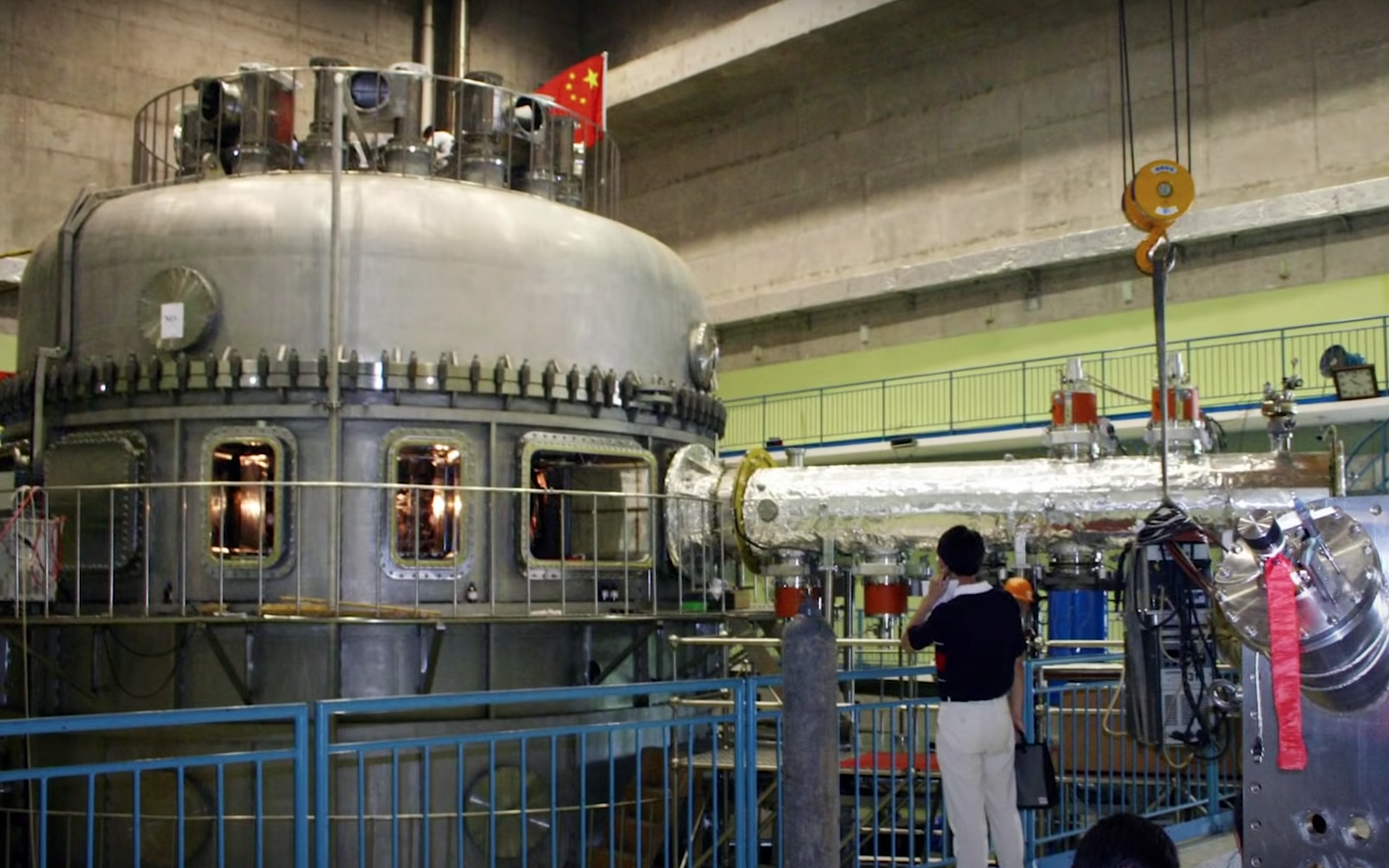The Sun, the star that gives life and light to our stupid planet and whose gravity gives shape to our solar system—a 900,000 mile-wide eyeball-searingly bright cinder fueled by the unfathomable energy produced by the incomprehensibly violent explosion that birthed the entire damn universe—burns at its core at a temperature of about 27 million degrees Farenheit. If I walk outside right now, into muggy 81-degree sunlight, I will say "Jesus fucking Christ!" and turn around and go back inside, and that's from 94 million miles away from the source. The Sun: Real hot!
I bring this up so that you will appreciate it when I tell you that China's experimental tokamak, nicknamed EAST, last week sustained a temperature of 216 million degrees Farenheit for a full 101 seconds. That was not even its hottest temperature of that round of burns—it hit 288 million degrees for 20 seconds—but the longer lower burn marks a new duration record for plasma temperatures in excess of 100 million degrees centigrade. Inside a torus at a laboratory of the Heifei Institutes of Physical Science in eastern China, researchers created a ring of star juice roughly ten times hotter than the hottest part of our actual Sun. I demand that you sit with that in silence for a few moments.
By now you must surely have an intricate understanding of tokamaks and indeed all plasma science, and so this brief explanation can only insult and bore you: Tokamaks are donut-shaped reactors that scientists at the forefront of plasma research believe provide the best opportunity to produce self-sustaining nuclear fusion reactions, which once mastered would provide humanity an all-too-urgently necessary pathway to clean and infinitely sustainable energy. The tokamak's heat-proofed internal chamber, called a torus, is filled with a cocktail of readily available hydrogen isotopes, which are suspended and animated by incredibly powerful, supercooled magnets. Thermal energy is pumped into the chamber in order to accelerate the reaction, and a glorious, radiant cloud of star stuff is formed, generating these brain-scrambling, nature-offending temperatures. Researchers around the globe are hunting for an elusive and all-important breakeven, the point where the energy generated by the reaction equals and then surpasses the thermal energy used to ignite and sustain it. The Joint European Torus (JET) is currently in the lead in the hunt for breakeven; back in December a South Korean tokamak (KSTAR) set the plasma world abuzz when it held at 100 million degrees C for 20 seconds. The technology is advancing in big terrifying leaps and bounds.
Li Miao, director of the physics department of China's Southern University of Science and Technology, told the Global Times that the next major milestone in tokamak research might be to hold one of these insanely hot plasma clouds at a stable temperature for a week or more. That is a long, long time to keep the hottest substance in the known universe blazing away in a human workspace, but for commercial fusion energy to ever make the jump from science fiction fascination to practical reality, eventually one of these suckers will need to burn and just keep on burning, indefinitely.
In the meantime, while this stuff is still in the experimental stages, do not become relaxed and careless in the company of an active tokamak. Do not, for example, stumble tiredly out of your cubicle during a research all-nighter, make a wrong turn on the way to the restroom, and mistakenly lower your poor naked buttcheeks into the unfathomably hot plasma cloud suspended inside the bowl-like torus. Not unless you want your tender bits and most of your midsection instantly sizzled off once and for all by the breath of God.






